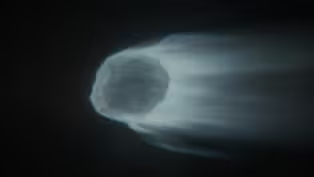
This Moon May Have the Ingredients for Life
Clip: Season 51 Episode 12 | 2m 14sVideo has Closed Captions
The ocean beneath Europa’s icy shell might be an ideal environment for life.
Europa is such a strong candidate for life that NASA launched a mission to explore the moon.
Problems playing video? | Closed Captioning Feedback
Problems playing video? | Closed Captioning Feedback
National Corporate funding for NOVA is provided by Carlisle Companies and Viking Cruises. Major funding for NOVA is provided by the NOVA Science Trust, the Corporation for Public Broadcasting, and PBS viewers.

This Moon May Have the Ingredients for Life
Clip: Season 51 Episode 12 | 2m 14sVideo has Closed Captions
Europa is such a strong candidate for life that NASA launched a mission to explore the moon.
Problems playing video? | Closed Captioning Feedback
How to Watch NOVA
NOVA is available to stream on pbs.org and the free PBS App, available on iPhone, Apple TV, Android TV, Android smartphones, Amazon Fire TV, Amazon Fire Tablet, Roku, Samsung Smart TV, and Vizio.
Buy Now

NOVA Labs
NOVA Labs is a free digital platform that engages teens and lifelong learners in games and interactives that foster authentic scientific exploration. Participants take part in real-world investigations by visualizing, analyzing, and playing with the same data that scientists use.Providing Support for PBS.org
Learn Moreabout PBS online sponsorship- [Narrator] A key ingredient from the ocean below surges up through the cracks, giving Europa's markings their distinctive red.
- So the red marks that we see on Europa's surface, these cracks and lines, are salts that have come up from below the surface.
- [Narrator] Suggesting a tantalizing possibility.
This crisscrossing system of salty canyons means we might find life in the ocean underneath Europa's icy shell.
- Life as we know it needs three basic things: water, a source of energy and also essential elements.
- [Narrator] Europa has an ocean and a source of energy from tidal movements, but it's missing the final key ingredient, some essential elements.
However, with a little help from its neighboring moon Io, these elements can be found on Europa.
- Io is an extremely volcanically active place, and these volcanoes emit sulfur and other sulfur products.
And these make it all the way onto Europa, and sulfur is one of those essential elements that life on Earth uses.
- All of the sulfur that's coming from Io and landing on Europa's surface is interacting with the salts and water that's coming up from underneath Europa's icy crust.
- [Narrator] Chemical reactions between the sulfur from Io and the salts on Europa create essential molecules needed for life.
- And this allows for this perfect breeding ground for potential life to form and evolve.
- [Narrator] Europa is such a strong candidate for life that NASA is already preparing to explore the moon.
The goal is to study Europa's surface in more detail so that a future mission can one day land and explore beneath its icy crust; and scientists like Sam are already testing ideas for studying Europa's watery world.
- What we're doing is we're deploying a robotic probe into the ice and under it to explore what this lake environment is like.
We might have the opportunity in my own lifetime to answer a question that's intrinsic to all of us: are we alone in our universe?
Are we alone in our solar system?
And one of the most exciting aspects of exploring Europa is the potential of someday knowing whether or not there's life in our own solar system.
(tense music)
Solar System: Icy Worlds Preview
Video has Closed Captions
Preview: S51 Ep12 | 30s | Visit strange, frozen worlds to discover the bizarre ice that forms beyond Earth. (30s)
Video has Closed Captions
Clip: S51 Ep12 | 55s | As comets cross the invisible boundary known as the ice line, their ice starts turning into gas. (55s)
Providing Support for PBS.org
Learn Moreabout PBS online sponsorship
- Science and Nature

Capturing the splendor of the natural world, from the African plains to the Antarctic ice.

- Science and Nature

Learn how centuries of knowledge helped our ancestors understand the mysteries of space.












Support for PBS provided by:
National Corporate funding for NOVA is provided by Carlisle Companies and Viking Cruises. Major funding for NOVA is provided by the NOVA Science Trust, the Corporation for Public Broadcasting, and PBS viewers.



